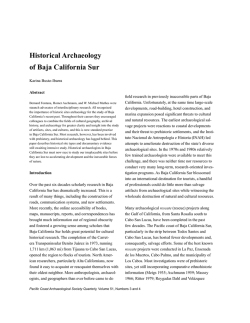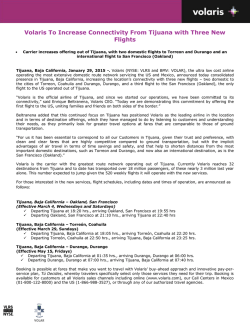
¡Cómo crece nuestro jardín! (Growing things) 6. Buying vegetables
¡Cómo crece nuestro jardín! (Growing things) 6. Buying vegetables Prior Knowledge: It is helpful if children are familiar with some key story phrases Objectives Engage in conversations; ask and answer questions; express opinions and respond to those of others; seek clarification and help Read carefully and show understanding of words, phrases and simple writing. Develop accurate pronunciation and intonation so that others understand when they are reading aloud familiar words and phrases. Understand basic grammar appropriate to the language being studied, such as (where relevant): feminine, masculine and neuter forms and the conjugation of high-frequency verbs; key features and patterns of the language; how to apply these, for instance, to build sentences; and how these differ from or are similar to English. Support Some of the children may need picture clues to help them work out the order of the phrases. When choosing a vegetable, accept from less confident children just the name of the item. Less confident children could practise and then record their roleplay using a video camera or a sound recorder. Extension Some children can incorporate previously learnt vocabulary and phrases into their role-play e.g. me gustan and no me gustan. Children can use picture dictionaries or word banks to find the names of other vegetables or fruit. (See Teaching Tips) Children could also use incidental language in the role play, for example ¿Perdón Señor? Más despacio por favor. In a further discussion on usted you could explain that, although it means ‘you’, the verb following it is in the 3rd person, like ‘he/she’. Children could compare this to the type of language a waiter might use in a restaurant in phrases such as “What would Sir like to drink?” and “Is Madam ready to order?” as if speaking about a third person. Main Introduce/revise vocabulary for a role-play at the market from previous session: Buenos días. ¿Qué desea (usted)? Me gustaría e.g. guisantes Aquí tiene, gracias Adiós. Discuss with children the fact that the stallholder uses usted instead of tú when addressing a customer. Why do they think this might be? Compare with English and any other languages that children may be familiar with. Explain that usted is another word for you and it used when being polite. As a class, practise the d sound in usted and mercado. Remind the children that the letter d makes two sounds in Spanish – d as in ‘dog’ and th as in ‘that’. Show the written form of the words días, usted, desea, mercado and adiós. Read them out and ask the children to say ‘th, th, th , th , th’ (as in ‘that’) or d, d, d, d, d depending on the sound they hear. Add the words mercado, adiós and usted to the d (th) page of the sound bank. ICT Opportunities: On an interactive whiteboard, display an image of a market and characters saying what they would like to buy. Sound files can be embedded into speech bubbles on the flipchart or notebook page. With you as the stallholder, children begin to develop role-plays for buying vegetables. ICT Opportunities: Using an interactive whiteboard, make a screen with a picture of a market stall. Place pictures of different fruits and vegetables on the stall and use an infinite clone function to replicate the items. Children can then “buy” as many items as they like without depleting the supply. Show children written sentences for the role-play and children read these aloud together. Pairs of children are given cut-up sentences to reorder and read aloud to each other. Some will need the support of picture cues. ¡Cómo crece nuestro jardín! (Growing things) 6. Buying vegetables Children practise role-plays in pairs. Confident children show their role-plays to the class. They comment on strengths and make suggestions for improvements. ¡Cómo crece nuestro jardín! (Growing things) 6. Buying vegetables Grammar Grammar Phonics focus Phonics focus For teachers: For children: For teachers: For children: Asking questions – ¿Qué desea? Register – usted is used instead of tú as a polite form. It is used to convey a sense of formality, as the customer would be speaking to someone they did not know well at the market. The plural form is ustedes. Usted and ustedes are followed by the third person (singular and plural respectively) of the verb. This means that a verb in the third person singular could mean he, she, it or you. If the context does not make it clear, the word usted should be included for clarity. E.g. ¿Cómo se llama? (What is he/she called?). ¿Cómo se llama usted? (What are you called?). Understanding that there are different ways to say ‘you’ depending on the person to whom you are talking. d (th as in ‘that’) - usted, mercado, adiós d (th as in ‘that’) - usted, mercado, adiós Learning Outcomes New National Curriculum Links Children can: English communicate with others using simple words, phrases and short sentences recognise and understand familiar words in written form use correct pronunciation in spoken work Throughout the week: Ensure that all children have the chance to show their role-play and receive feedback from the class. Teaching Tips Extension activity: If the interactive whiteboard has a hyperlink function, children can tap on a picture to go to an explanation of the word. You could also display a small part of the picture, e.g. the stalk of a tomato, from which the children have to identify the whole fruit, They can click on it to see the whole picture as well as the text, in order to check whether they are right. A large open space is ideal for practising and performing the role-plays Giving children an identity, an emotion or a puppet may encourage them to practise the conversation more often as they can swap puppets, identities Reading – Years 3 - 4 Develop positive attitudes to reading and understanding of what they read by: preparing poems and play scripts to read aloud and to perform, showing understanding through intonation, tone, volume and action Resources Plastic or real fruit Images of market Cut-up sentences ¡Cómo crece nuestro jardín! (Growing things) 6. Buying vegetables or perform the dialogue ‘in the manner of’ different emotions. El lenguaje del profesor / de la profesora Teacher Language El lenguaje de los niños Children’s Language En el mercado Me gustaría... Por favor (When I am) at the market I would like Please En el mercado Me gustaría... Por favor (When I am) at the market I would like Please Buenos días. ¿Qué desea? (usted: polite form) Me gustaría e.g. guisantes Aquí tiene, (usted: polite form) gracias Adiós. Hello. What would you like? (polite form) I would like e.g. some peas There you are (polite form), thank you Goodbye Buenos días. ¿Qué desea? (usted: polite form) Me gustaría e.g. guisantes Aquí tiene (usted: polite form), gracias Adiós. Hello. What would you like? (polite form) I would like e.g. some peas There you are (polite form), thank you Goodbye End of Unit Activities Objectives to apply the knowledge, skills and understanding in this unit Teaching Activities Children re-create the role-play conversation in the context of an improvised restaurant situation. In groups, one child is given a tray with bite-size portions of vegetables named so far. He or she is the waiter or waitress. The others are customers and in turn, they choose a vegetable to eat. Learning Outcomes use the language at their disposal to recreate a real-life situation Points to note Children can use this opportunity to recycle any social language learnt in previous units. For those schools with videoconferencing facilities and partner school(s), during a video conference a market role play could be done together with partner class. Involve whole class by asking children to draw items on their mini whiteboards. Children could also record transactions at a local market and share with the partner school via videoconference. Juan y las judías mágicas ¡Fa, Fe, Fi, Fo, Fu! Éste es el cuento de un niño. ¡Hola! ¿Cómo te llamas? Me llamo Juan. Juan es pobre. Su madre es pobre. Pero durante la noche, una judía mágica crece. Y crece, y crece, y crece. ¡Zas! Juan sube por el tallo mágico. Juan sube por el tallo mágico. Sube, sube, y sube hasta el cielo. Y entra en el castillo. Y ve la gallina y el arpa mágica. El gigante aparece. El gigante aparece. El gigante, grande, grande. ¡Juan, escóndete! ¡Fa, Fe, Fi, Fo, Fu! – ¡Huelo a niño! ¡Cómo crece nuestro jardín! (Growing things) 6. Buying vegetables Juan y su madre son pobres, muy pobres. No tienen nada para desayunar Nada para comer. Nada para cenar ¡Nada de nada! La madre dice: – Juan, vamos a vender la vaca. Muu, muu, muu, muu, muu. – Ve al mercado. – ¡Rápido, rápido! Juan y la vaca van al mercado. Se encuentran con un hombre anciano. – Me gustaría comprar la vaca. Aquí tienes cinco judías mágicas. Una, dos, tres, cuatro, cinco. Pero su madre le dice: – ¡Qué tonto eres! Ella coge las judías, las judías mágicas Una, dos, tres, cuatro, cinco Y las tira al suelo. Sube, sube, y sube hasta el cielo. Juan ve un castillo enorme. Pom, pom, pom, pom Nadie está ahí. Juan entra en el castillo. Ve unas monedas de oro, una gallina y un arpa mágica. El gigante aparece. El gigante, grande, grande. ¡Juan, escóndete! ¡Fa, Fe, Fi, Fo, Fu! – ¡Huelo a niño! Pero no encuentra a Juan. El gigante se queda dormido. ZZZZZZZZZZZZZZZZZZZZZZZ Juan decide acercarse. Se lleva las monedas de oro. Juan baja por el mágico. Baja, baja, baja. ¿Y entonces? El gigante, grande, grande. ¡Juan, escóndete! ¡Fa, Fe, Fi, Fo, Fu! – ¡Huelo a niño! Pero no encuentra a Juan El gigante se queda dormido. ZZZZZZZZZZZZZZZZZZZZZZZ Juan decide acercarse. Se lleva la gallina. Juan baja por el tallo mágico. Baja, baja, baja. ¿Y entonces…? Juan sube por el tallo mágico. Sube, sube, y sube hasta el cielo. Y entra en el castillo. Y ve el arpa mágica. Pero no encuentra a Juan. El gigante se queda dormido. ZZZZZZZZZZZZZZZZZZZZZZZ Juan decide acercarse. Se lleva el arpa mágica. Pero el gigante se despierta. El gigante corre detrás de Juan. Juan baja por el tallo mágico. Baja, baja, y baja. Pero el gigante corre detrás de él. Juan busca un hacha. ¡Rápido, rápido! Juan corta el tallo mágico. ¡Rápido, rápido! ¡Plafff! El gigante se cae. ¡Plafff! Y éste es el final del gigante. Y el final del cuento.
© Copyright 2025

